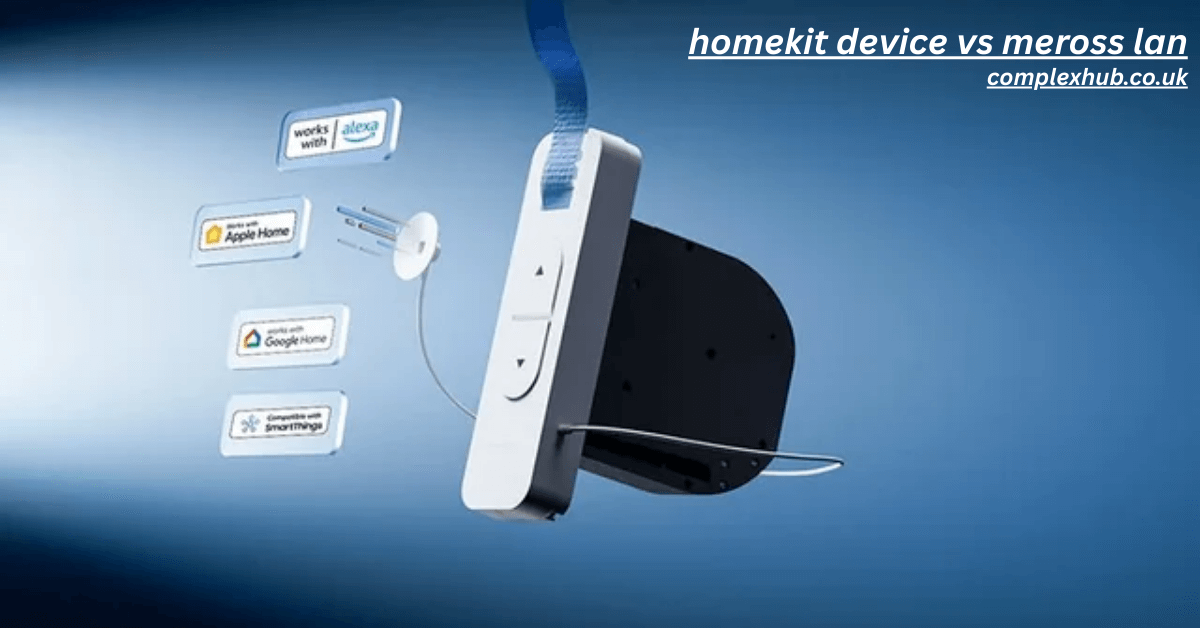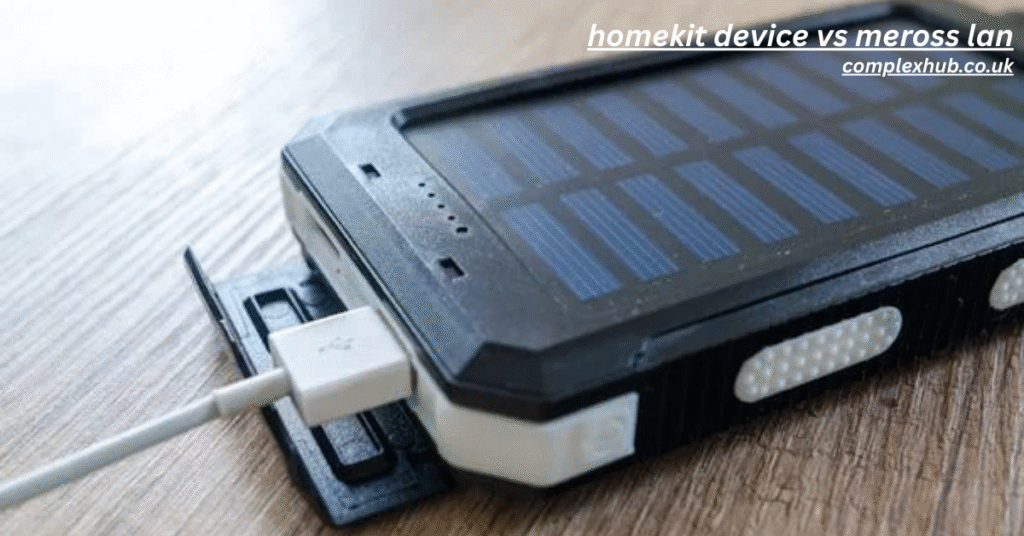
In the rapidly evolving world of smart home technology, choosing the right platform is crucial for seamless integration and control. Two prominent options are Apple’s HomeKit and Meross LAN control. HomeKit offers a comprehensive ecosystem for Apple users, emphasizing security and ease of use, while Meross LAN provides local control of smart devices, ensuring functionality even during internet outages. This article delves into the features, advantages, and considerations of both platforms to help you make an informed decision.
What is a HomeKit Device?
Apple’s HomeKit is a smart home platform that allows users to control various smart devices through Apple devices like iPhones, iPads, and Macs. HomeKit-certified devices can be managed via the Apple Home app or Siri voice commands, offering a unified and intuitive user experience. The platform supports a wide range of devices, including lights, thermostats, locks, and cameras, all integrated into a cohesive ecosystem.
One of HomeKit’s standout features is its emphasis on security and privacy. All communications are end-to-end encrypted, ensuring that user data remains protected. Additionally, setting up a Home Hub using devices like Apple TV or HomePod mini enables remote access and advanced automation capabilities, enhancing the overall smart home experience.
Understanding Meross LAN Control
Meross LAN control is a feature offered by Meross, a smart home device manufacturer, allowing users to control their devices over a local area network (LAN) without relying on cloud services. This local control ensures that devices remain operational even during internet outages, providing reliability and faster response times.
Meross LAN supports integration with platforms like Home Assistant and Homebridge, offering flexibility for users who prefer or require local control. Additionally, Meross devices often support MQTT (Message Queuing Telemetry Transport), a lightweight messaging protocol ideal for IoT applications, enabling seamless integration with various home automation systems.
HomeKit Device vs Meross LAN: A Detailed Comparison
Functionality and Ecosystem
HomeKit provides a robust and secure ecosystem tailored for Apple users. With seamless integration across Apple devices, users can control and automate a wide range of smart home devices using the Home app or Siri. The platform supports various automation scenarios, enhancing convenience and personalization.
In contrast, Meross LAN focuses on providing reliable local control for Meross devices. While it may not offer the extensive ecosystem of HomeKit, it excels in environments where internet connectivity is unreliable or where users prioritize local control. Its compatibility with platforms like Home Assistant and support for MQTT allows for flexible and customizable automation setups.
Internet Dependency
HomeKit requires an internet connection for remote access and certain automation features, especially when using a Home Hub. However, basic control within the local network remains functional without internet access.
Meross LAN’s primary advantage is its independence from the internet. By operating over the local network, Meross devices remain controllable even during internet outages, ensuring uninterrupted functionality for critical devices like lights and security systems.
Security and Privacy
Apple places a strong emphasis on security and privacy within the HomeKit platform. All data transmissions are end-to-end encrypted, and user data is stored securely, with strict access controls. This commitment to privacy makes HomeKit a preferred choice for users concerned about data security.
Meross LAN enhances privacy by minimizing reliance on cloud services. By operating within the local network, data exposure to external servers is reduced. However, users must ensure their local network is secure, with updated firmware and strong passwords, to maintain optimal security.
Ease of Use
HomeKit offers a user-friendly experience, especially for those already within the Apple ecosystem. The Home app provides an intuitive interface for device management and automation setup, while Siri integration allows for convenient voice control.
Meross LAN setup may require a bit more technical knowledge, particularly when integrating with platforms like Home Assistant or configuring MQTT. However, for users comfortable with these systems, Meross LAN offers a flexible and powerful solution for smart home control.
Cost
HomeKit-compatible devices often come at a premium, reflecting the platform’s emphasis on quality and security. Additionally, setting up a Home Hub for remote access involves purchasing devices like Apple TV or HomePod mini.
Meross devices are generally more affordable, offering cost-effective options for users seeking reliable smart home solutions. The LAN control feature is included at no extra cost, making it an attractive choice for budget-conscious consumers.

Performance and Responsiveness
HomeKit delivers reliable performance, especially when paired with a stable internet connection and a properly configured Home Hub. However, some latency may occur when relying on cloud-based control.
Meross LAN’s local control ensures faster response times, as commands are processed within the local network without the need to communicate with external servers. This results in a more responsive and reliable smart home experience.
Which One Should You Choose?
The choice between HomeKit and Meross LAN depends on individual preferences, technical proficiency, and specific smart home goals.
Choose HomeKit if:
- You are deeply integrated into the Apple ecosystem and value seamless integration across devices.
- Security and privacy are top priorities.
- You prefer a user-friendly interface with robust automation capabilities.
Choose Meross LAN if:
- You prioritize local control and need your devices to function during internet outages.
- You are looking for a more affordable smart home solution.
- You are comfortable with technical setups and seek flexibility in automation through platforms like Home Assistant.
Combining the Best of Both Worlds
For users seeking the advantages of both platforms, it’s possible to integrate Meross devices into the HomeKit ecosystem. Some Meross devices are HomeKit-compatible, allowing control through the Home app and Siri when the internet is available, and reverting to LAN control during outages. This hybrid approach offers both the security and integration of HomeKit and the reliability of Meross LAN.
Conclusion
Both HomeKit and Meross LAN offer compelling features for smart home enthusiasts. HomeKit provides a secure, integrated experience for Apple users, while Meross LAN offers reliable local control and affordability. By understanding the strengths and limitations of each, users can tailor their smart home setup to best meet their needs and preferences.
Frequently Asked Questions
Q: Can I use Meross devices with HomeKit?
A: Yes, some Meross devices are HomeKit-compatible, allowing integration with the Apple Home app and Siri.
Q: Do I need an Apple TV or HomePod to use HomeKit?
A: While not required for basic functionality, an Apple TV or HomePod can serve as a Home Hub, enabling remote access and advanced automation features.
Q: Is Meross LAN control available on all Meross devices?
A: Not all Meross devices support LAN control. It’s essential to check the specifications of each device to confirm LAN compatibility.
Q: How does MQTT integration benefit Meross LAN users?
A: MQTT allows for efficient communication between devices and automation platforms like Home Assistant, enabling complex automation scenarios and enhanced control.
Q: Which platform offers better security?
A: HomeKit emphasizes end-to-end encryption and strict privacy controls, offering robust security. Meross LAN reduces cloud dependency, enhancing privacy, but requires users to secure their local network adequately.
read more: Simpcitt







